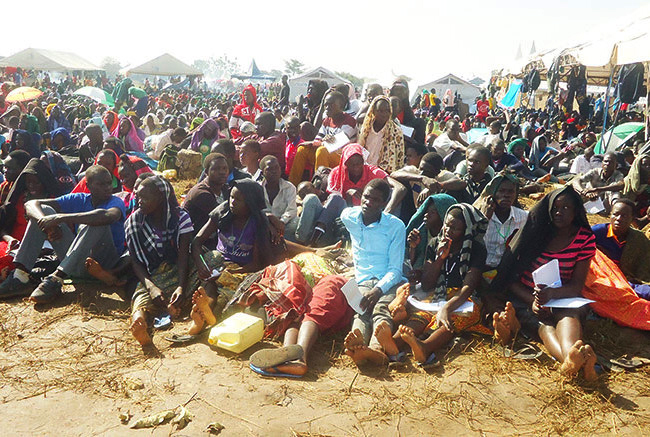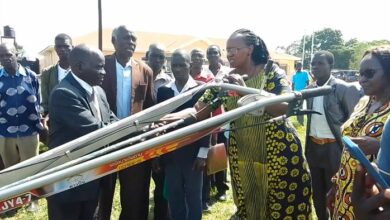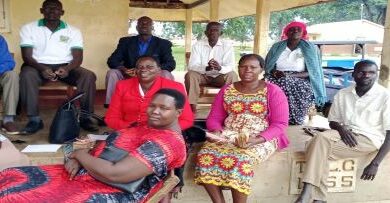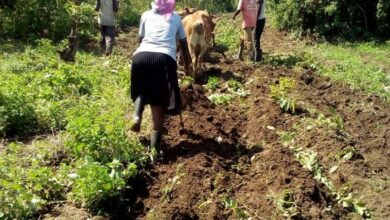Allow the youth to drive Vision 2040, say population and economic experts

NATIONAL – Population, economic experts and civil society activists have warned that for Uganda to harness her demographic dividend and achieve aspirations of attaining upper middle-income status by 2040, the government must prioritise investing in the youth.
They say that according to the National Population Council [NPC], youths below the age of 30 make up more than 78 percent of the estimated 40 million people in Uganda.
More than 70 percent of the youths are unemployed and this is why population experts and civil society are calling on the Ugandan government to strive to reverse these trends.
The demographic dividend according to United Nations Population Fund is an opportunity for economic growth, development and improved well-being that arises as a result of changes in the population age structure.
Uganda population report 2020, by the National Population Council [NPC], which is a state agency that advises government on population issues indicates that the country’s population is projected to reach 75 million by 2040 from the current 43,249,948.
Uganda has a population growth rate of 3.3 percent per annum, making it the third fastest growing population globally.
According to Vision 2040, the government is targeting to transform Ugandan society from a peasant to a modern and prosperous country within 30 years, with per Capita GDP increasing from US$506 in 2010 to US$,500 by 2040.
The vision recognizes rapid population growth, a young age structure and consequent high child dependency burden among the threats to the achievement of socio-economic development.
Vision 2040, pronounces harnessing demographic dividend as one of the strategies for benefiting from the country’s abundant young population.
However, Stella Kigozi, the Director, Information & Communications National Population Council told theCooperator that for Uganda to achieve its aspiration of upper middle income status by 2040, the challenge posed by a high population growth has to be addressed.
She explained that investing in the youth age group will guarantee a healthy and skilled human resource.
“If the increase in the number of working age individuals can be fully employed in productive activities, other things being equal, the level of average income per capita should increase as a result,” she stated.
Benson Ekwe Ochen, the Executive Director, Public Affairs Center Uganda [PAC], the alternative to a youth dividend is a youth bulge, which is characterized by high youth unemployment.
Frustrated by the lack of opportunities, he said that many of Uganda’s young people are risking their lives on perilous journeys in search of a better life in Middle East countries.
A youth bulge which is a ticking time bomb, he said can be defused if governments invests well in projects that create jobs or enable youth to start their own businesses, make agriculture more attractive to youth, promote technology, improve young people’s skills and make school curricula relevant to the needs of job markets.
Sheila Apiny, the Coordinator Action Aid Uganda, Katakwi district cluster argued that the government should pass and implement laws that end cultural practices which promote child marriages or keep girls away from school.
“Governments need to support gender equality, empower women and girls, crack down on teenage pregnancies and tackle communicable diseases,” she said.
Meanwhile, Lilian Kamanzi Mugisha, the communication and fundraising manager at AMFERF stated that for Uganda to achieve her aspiration of upper middle-income status by 2040, there is need to meaningfully engage the young population as a productive force.
She warned that if that is not done, then the youth will be a productive liability which will bog down government efforts to drive Ugandans to the upper middle-income status by 20240.
“If a large number of youths cannot find employment and earn satisfactory income, they are likely to become a potential source of social and political instability, “Kamanzi Mugisha said.
According to her, sustained economic growth is critical in creating opportunities for the youthful population that is entering the labor market.
Kamanzi Mugisha emphasized the need by the government to invest in health, education, agriculture, tourism, oil and gas since they have a high multiplier effect and can spur inclusive economic growth.
On the other hand, she also urged government to continue to invest in the health sector saying that the healthiness of the country’s labor force determines the level of productivity.
Mugisha further said that for instance as children’s health and survival rates improve, family demand for more children declines.
“Smaller family sizes improve maternal health, which further improves child health, as well as increase women labor force participation, hence contributing to economic growth”, noted Kamanzi Mugisha.The World Bank’s latest Uganda Economic report, increasing government spending on health and education over the next five years will enable Uganda to enjoy a demographic dividend that comes with a fast-growing young population.
The report, titled “Investing in Uganda’s Youth”, recommends an increase in resources to the education and the health sectors to ensure that the youthful workforce is healthy, skilled and well-educated in order to be productive and contribute to the country’s growth and transformation.
This requires increasing the current education budget of $480 million to $979 million by 2025, the report says, while basic health service expenditures need to rise to $914 million in 2030, up from the current $703 million.
“Although more substantial and strategic investments in the sector are required to reach the Sustainable Development Goal [SDG] scenario, this will also generate substantial efficiency gains in the long term”, the report highlights.
To attain the Universal Health Coverage goals outlined in the SDGs by 2030, between now and 2025, the report recommends to government to establish 20 additional general hospitals, procure 11,796 additional hospital beds, and recruit more 29,162 skilled healthcare workers to reach the 44.5 skilled healthcare workers per 10,000 population targets.
Political Commitment for Harnessing Demographic Dividend.
The 2020 National Population Policy recognises population as the most important asset for Uganda as a country.
The 2018 Uganda’s Demographic Dividend [DD] road map focuses efforts to integrate DD priorities in development planning.
Also, the National Development Plan II and III prioritises the demographic dividend as one of the key strategies for achieving Vision 2040.
https://thecooperator.news/population-growth-threatening-sustainable-land-use-in-teso-sub-region/
Buy your copy of theCooperator magazine from one of our countrywide vending points or an e-copy on emag.thecooperator.news







